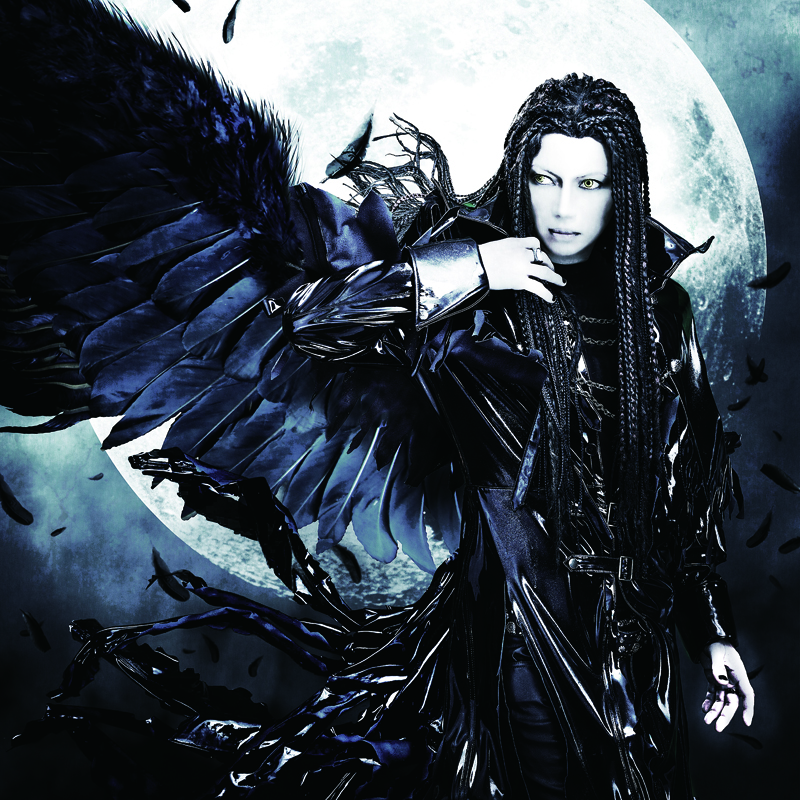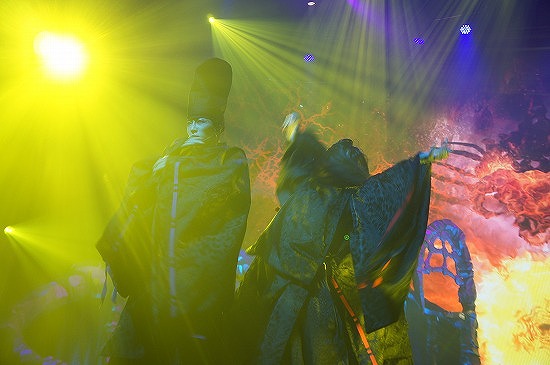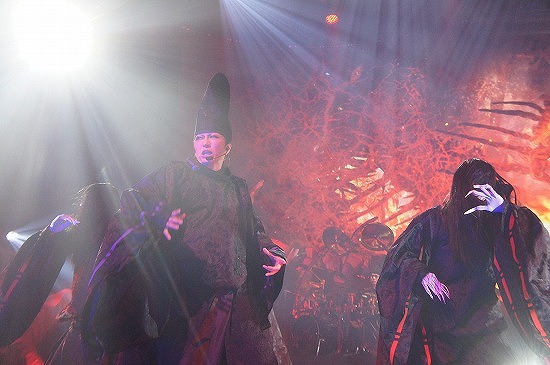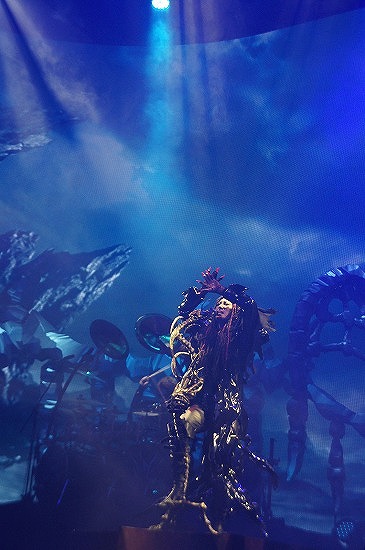■GACKT/New Album『LAST MOON』Interview(1/4)
「Both mentally and physically, this is the last VISUALIVE」
On April 27 (Wed), GACKT’s first original album in 7 years,『LAST MOON』will be released. While it includes selected singles released after『Setsugekka -The end of silence-/斬~ZAN~』(2009), it also includes the latest single「ARROW」. The emphasis of this album is that it is the set of expressionist performance of GACKT’s『GACKT WORLD TOUR 2016 LAST VISUALIVE Saigo no Tsuki ‐LAST MOON‐』(in the midst of a nationwide tour since March 19), his newest version of the VISUALIVE, which is the stage work built from his unique expressive stlye. In the summer of 2015 when we were doing an interview about『ARROW』, GACKT revealed that for the tour, he was creating songs which blend traditional Japanese poetry with rock. Back then, he let us listen to a fragment of beautiful music on PC, which was「Hana mo Chiyu」, the latest version of Zipang rock that has come into fruition in this work. This interview was carried out when he was extremely busy, with the album still unfinished and on the eve of the start of『GACKT WORLD TOUR 2016 LAST VISUALIVE Saigo no Tsuki -LAST MOON-』. Again, we asked about the meaning behind mentioning the word “LAST (saigo)”, and in this work, we explore even deeper into the story behind the birth of GACKT world.
By using traditional Japanese poetry I can use odd rhythms naturally, which turned out to be advantageous to me.
――Firstly, how’s your health recently?
GACKT:Around 2 weeks ago (※interview was conducted in late February) I fell sick, and it was a little tough then. Somehow I’ve been resurrected now. I’ve been building my body for the tour, and I’ve been chasing after a variety of things, so mentally I’m suffering a lot (laughs).
――(Laughs). During the interview covering your latest single『ARROW』, there was a song with an irregular beat that you were making which incorporated traditional Japanese poetry mixed with modern phrases. Is the completed of it the second song in your album,「Hana mo Chiyu」?
GACKT:That’s right. In actuality there are others as well but, because I’d be doing too much of that in the concert, I cut the songs.
――Just to reconfirm the basic understanding, the new songs which you planned to record were songs that you created with the 『LAST VISUALIVE』envisioned right?
GACKT:That’s right. Because the songs were made with the live in mind, songs that make me think 「it can’t be performed during the live」, (even if it’s already made) I probably won’t even let it be shown. If I performed all the songs it would last 4 hours. I want to finish it in 3 hours. I thought「around 2 and a half hours」as a goal but, in the present situation, no matter how you look at it, I I can’t help but think「This, can’t be finished in 2 and a half hours… …」(laughs).
――But, even if it’s around 3 hours long I’d still want to watch it… …
GACKT:No, if you’re performing its tiring y’know (laughs).
――I apologise for my selfish words (laughs). Listening to it, it was impressive how naturally the irregular rhythm is incorporated in the song.
GACKT:Basically, the 4/4 time is the main (time signature in rock). For British and Americans, they don’t like having tempos and rhythms like 6/8 or 7/4 or 5/4 time in rock music. The reason why is because they aren’t good with odd-time signatures. But, I originally have my roots in classical music and am familiar with progressive music, so I really like those beats. But, I don’t have the thought of 「wanting to create beats that cannot be understood」 at all. As expected, wanting to 「create something melodic」is a big part of me. However, I recently came to understand that while contemporary music feels better expressed with a 4/4 beat or 8/8 beat, for traditional Japanese poetry, it is more interesting to approach it with 7/4 or 5/4 beats instead. That is probably, due to the arrangement of the words.
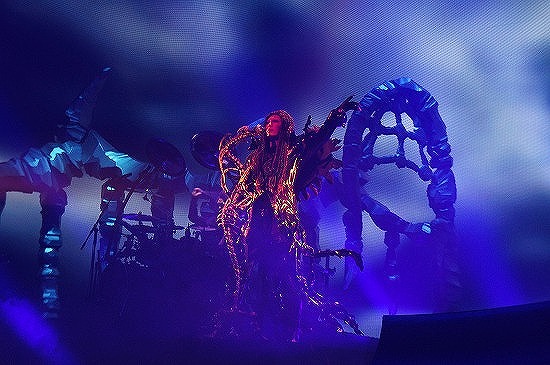 ――”Hanakahoru kimi nara de Dare ni ka misenu teru tsuki zo” is broken into 5, 5, 7, then 5 syllables, and is overlapped with a beautiful rhythm.
――”Hanakahoru kimi nara de Dare ni ka misenu teru tsuki zo” is broken into 5, 5, 7, then 5 syllables, and is overlapped with a beautiful rhythm.
GACKT:Yes. Just reading it alone is interesting as well, it’s really beautiful. By using traditional Japanese poetry I can use odd rhythms naturally, which turned out to be advantageous to me, and by mixing it with contemporary poetry after that, then cleverly transitioning around, it makes me think 「Ah, this is fun」. Instead of doing it with the intent of wanting to incorporate things in, it just happened naturally though.
――The fusion of traditional Japanese poetry with rock is an invention of GACKT-san’s right. Considering that foreign artistes will, of course, find it difficult to do.
GACKT:Its quite hard to make use of traditional Japanese poetry. For me, I enjoy literature like these, and I also like stuff from this era. Although, in other words, I think that it would be nice if everyone could naturally become interested in things like the aesthetics of Japanese poetry, but it’s not something I’d really want to impose on others though.
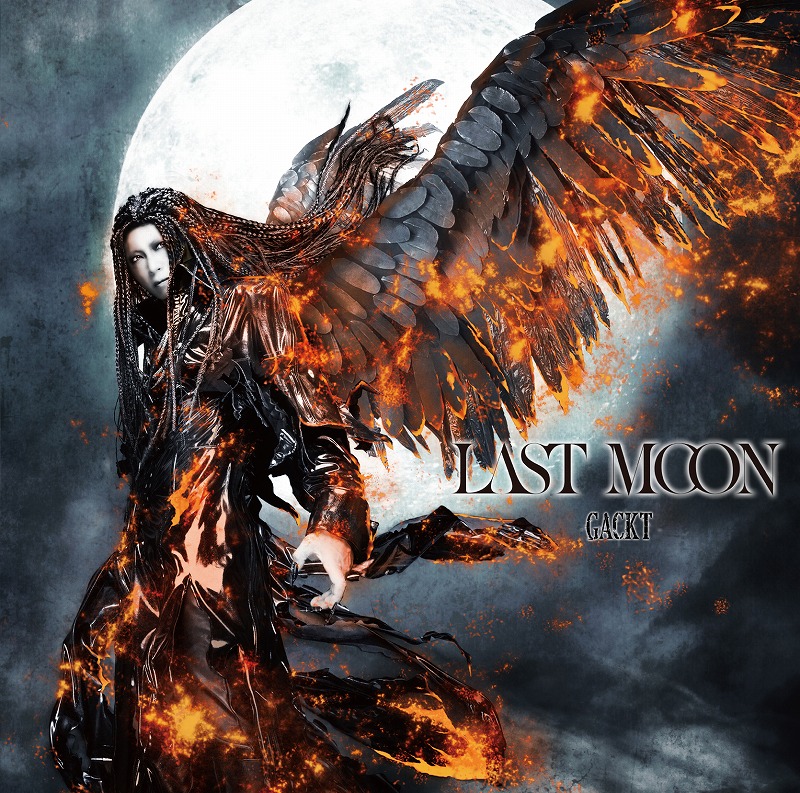
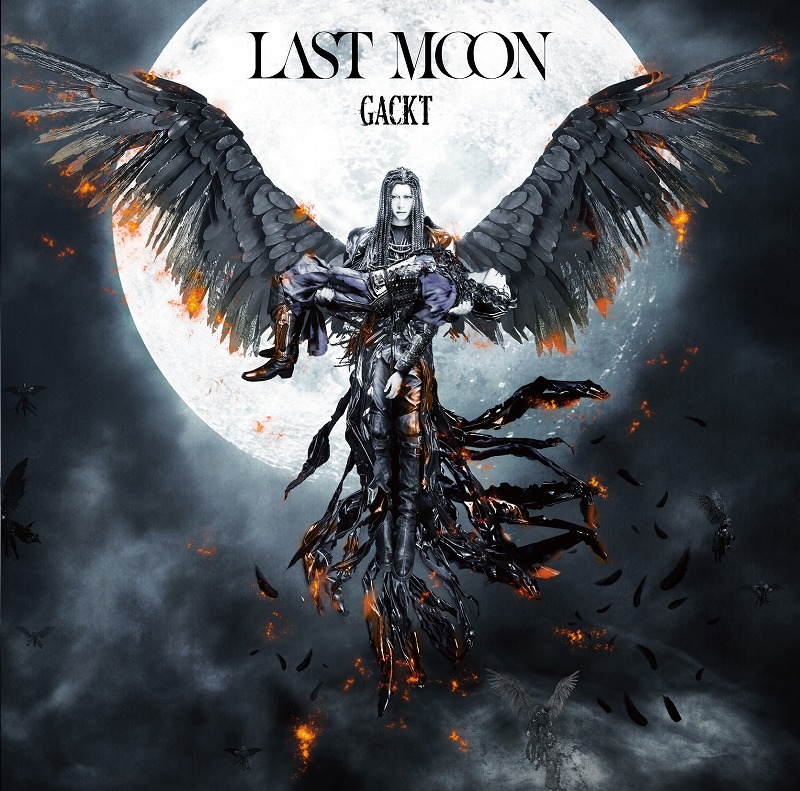 ――I think there’s an educational property of it that can be aimed at youths but, is that not true?
――I think there’s an educational property of it that can be aimed at youths but, is that not true?
GACKT:It’s not a cram school so, there’s none of that. If they can naturally take it in that would be good. If I wrote everything in traditional Japanese poetry, the meaning of it will be lost on present-day people. I offer it at a level where Japanese poetry is included yet it makes people wonder 「what is the meaning behind this poetry?」.
Source: excite.co.jp
Translation: GACKT ITALIA Team
Translation © GACKT ITALIA


 Italiano
Italiano